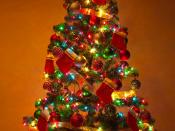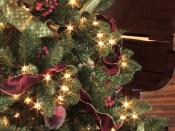Symbolism in A Doll's House
Symbols are used universally to arouse interest to something prosaic and to stimulate the mind. Henrik Ibsen's play, A Doll's House is fraught with symbols that represent abstract ideas and concepts. These symbols successfully illustrate the inner conflicts that are going on between the characters. A few of the symbols are the macaroons, the Tarantella dance, and the Christmas tree. Nora lies about the macaroons twice, the first time to Torvald and the second time to Dr. Rank. Nora resorts to lying about eating the macaroons because she feels she is at fault for disobeying. The macaroons denote Nora's dishonesty, which also alludes to her act of committing objectionable, underhanded deeds. The Tarantella is symbolic because it shows that Nora is trying to rid herself of the poison just as the dance's original meaning is to try to expel the poison from the bite of a tarantula.
The Christmas tree is another image in the play, which corresponds to Nora. Just as the Christmas tree is employed as a decorative, aesthetic object, Nora serves the same purpose as a doll living in her dollhouse solely for aesthetic purposes
Nora's fetish for macaroons is one example of a very suggestive symbol. When Torvald approaches Nora and questions Nora in a childlike manner if she has disobeyed him eating macaroons he say, "(wagging his finger at her) Hasn't Miss Sweet Tooth been breaking rules in town to-day?" (6) Nora hides the truth and reassures him that she has not. Torvald appears to be teasing her, but the mere truth that for such an insignificant matter Nora has to lie, indicates that there is conflict in their relationship. The second time that Nora lies about the macaroons is when she offers them to Dr. Rank.


